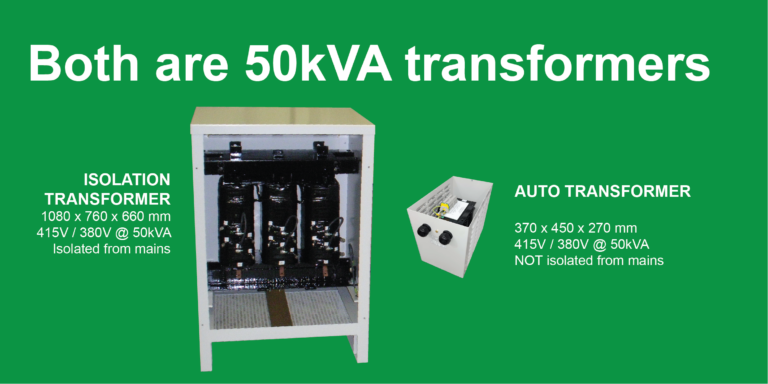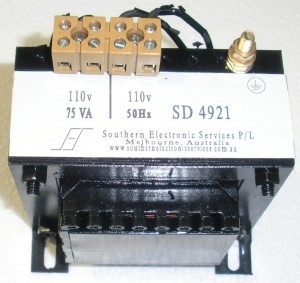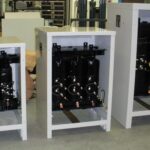Electronic transformers are electronic components that convert electrical energy from one form to another.
While there are lots of uses for electronic transformers, this could differ depending on the type of electronic transformer being used.
In this post, we’ll look at 13 of the most common uses for electronic transformers. Let’s get started.
13 Ways You Can Use an Electric Transformer
Here are 13 ways electronic transformers can be used:
1. Power conversion:
Electronic transformers are commonly used to convert alternating current (AC) or direct current (DC) to a different voltage or amperage. An example of this is in electronic devices that require AC voltage to run, but the wall socket provides DC voltage.
2. Isolation:
Electric transformers can be used to isolate electronic signals from each other. This prevents electronic signals from interfering with each other or being contaminated by external interference.
3. Voltage regulation:
Electric transformers are often used to regulate the voltage in electronic circuits; this includes input voltage and output voltage, ensuring that electronic components don’t receive too much or too little voltage.
Consisting of primary and secondary coils and a magnetic core, electronic transformers are built for use in many applications to provide power for electronic circuits and systems.
The primary voltage is used to create a magnetic field in the transformer’s core, which induces voltage into the secondary coil. These primary windings allow electronic transformers to be used for many electronic applications, such as electronic lighting and electronic equipment.
4. Electric energy storage:
Electric transformers can be used to store electric energy for later use. By connecting a capacitor to an electricity supply, such as a transformer, electric energy can be stored until it is needed.
5. Filtering:
An electronic transformer can be used to filter electronic signals, preventing interference from external electronic components. This is especially useful in electronic circuits that deal with high-frequency signals.
6. Amplification:
Electronic transformers can be used to amplify electronic signals, depending on their power factor, among other features, increasing their output power and reach. This can result in marginally lower power bills, which is a great benefit.
7. Noise reduction:
Electric transformers can also be used to reduce electronic noise in electronic circuits. This can help reduce interference between electronic components and allow for more reliable electronic communication.
8. Signal transmission:
Electronic transformers are used to transmit electronic signals over long distances.
9. Signal conversion:
Electric transformers can be used to convert electronic signals from one form to another. For example, an electric device that has an operating frequency of 5 MHz can be converted to one that operates at 10MHz.
10. Surge or short circuit protection:
Electric transformers are used to protect electronic circuits from power surges and other forms of electronic damage. This helps electronic components from overheating or being damaged.
11. Matching electronic devices:
Electric transformers can be used to match electronic devices, ensuring that they receive the same amount of power. While a small transformer can carry a light load, a larger transformer may be required to carry a heavier electronic load. But if electronic devices are not properly matched, electronic components may be damaged.
12. Automation:
Electric transformers are used to automate electronic processes, allowing electronic devices to operate without any human input. This can be beneficial for electronic processes that require precision or accuracy.
13. Inverters:
Electric transformers can be used to create electronic inverters, which convert AC power into DC power. This can be used to power electronic devices that require a DC current, such as electronic motors and electronic lighting.
Conclusion
Overall, electronic transformers are versatile electronic components with lots of uses. From power conversion to automation and noise reduction, electronic transformers can be used for a wide range of electronic applications.
At Southern Electronics, we carry a wide selection of electronic transformers for all your electronic needs. Contact us for more information.
Next Post
Power Transformer: Definition, Types, Uses, Benefits & More
December 9, 2022Other News

Isolation or auto transformer… Which is right for you?
5 Tips to Determine Whether You Need an Isolation Transformer or an Autotransformer Choosing the right transformer for your electrical system is crucial for efficiency, safety, and compliance. Many electricians and engineers often ask: When should I use an isolation transformer, and when is an autotransformer the right choice? To help you make an informed…

Electrical Contractors – Biggest hurdles
The 5 Biggest Challenges Electrical Contractors Face – And How SES Helps Solve Them – How good would it be to complete a job on time, under budget, the security of local support and service, backed by huge warranty periods? You’d be a hero, right? How much money is your company losing by not delivering…

